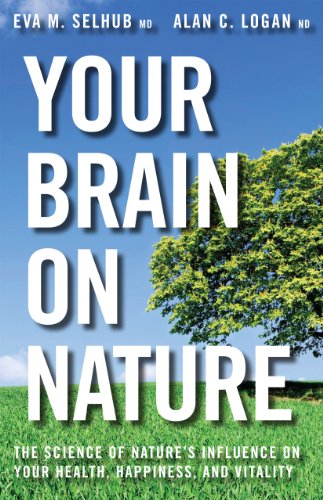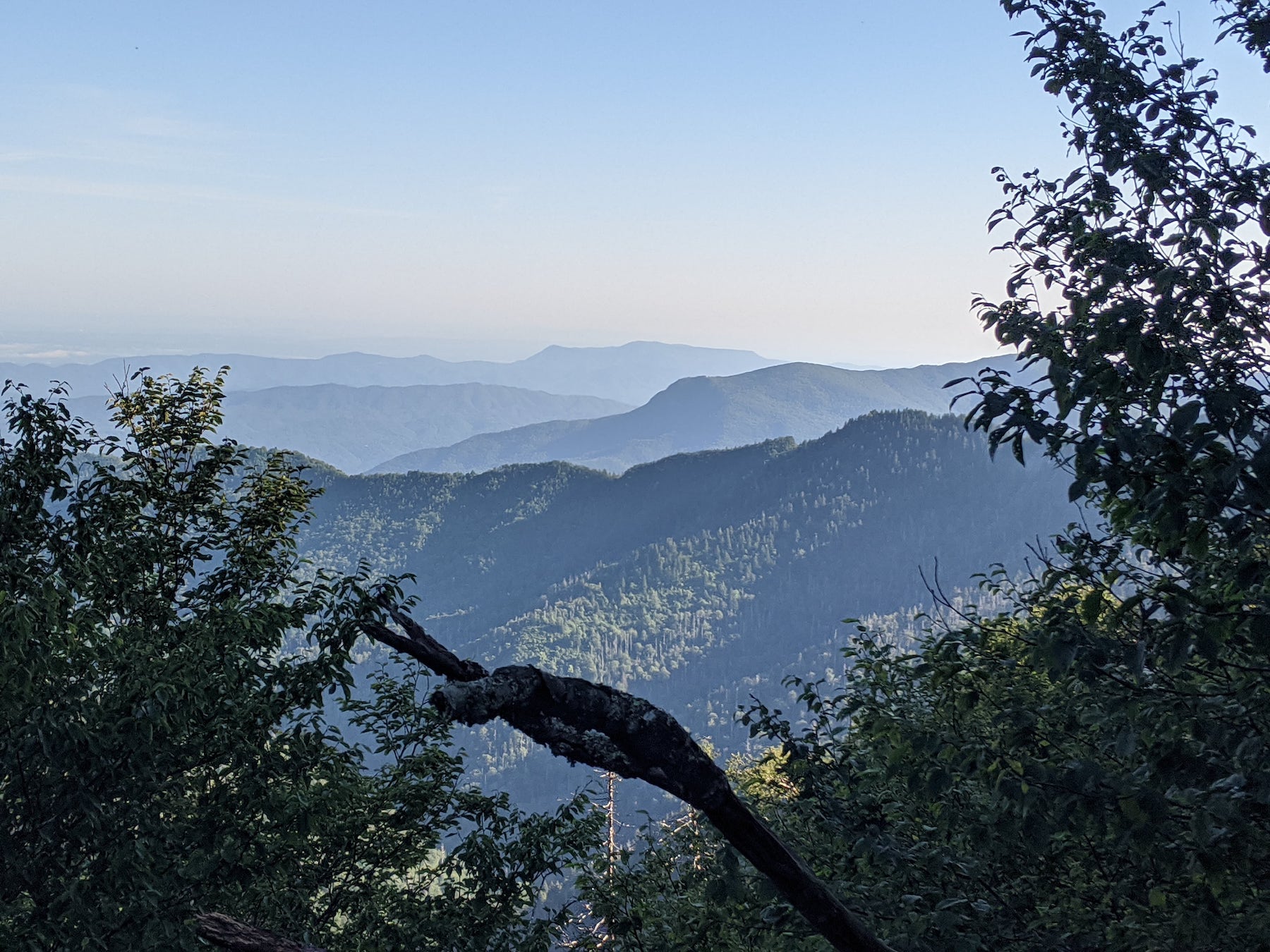
Rating: 7/10
Noteworthy Thoughts
I really enjoyed this book. The writing isn’t amazing but the topic is fascinating. Few books have illuminated the empirical evidence of nature’s effect on the human brain. It’s not something that scientists have dedicated a lot of research and study to until fairly recently. This book dives into the science of nature’s influence on our mental health and physiology. We know intuitively that being out in nature and away from the city is restorative and enjoyable, but modern predilection needs scientific evidence before fully embracing it. This book gives it. Lots of great bits of practical information that you can immediately apply to your life.
Summary Notes
Nature should not be forgotten. Nature exposure is a form of medicine.
Our brains have been hardwired and designed by our 2 million year relationship with nature. We were forged out in the wild and modern civilization with it’s advanced technology has isolated us further from nature. Philosophers, poets, and early doctors intuitively knew that in order to relieve anxiety and stress, nature was a powerful tonic. There wasn’t until recently serious dedicated scientific study of nature’s effect on our psychology and physiology.
As science developed, powerful anti-anxiety and depression medication was developed to combat modern ills instead of looking to the powerful healing of nature. However study after study across the world are proving that nature reduces stress, prevents depression and anxiety, boosts immunity, and relaxes our brain. Our brain is more relaxed and less stressed walking in a forest compared to a busy downtown sidewalk. Not only does it relax and reduce our stress, it actually helps us recover faster from stressful situations we face.
For 2 million years we evolved in nature. It makes sense that deprivation from it causes serious psychological and physiological problems.
What I got from the book in quick bullets:
- Humanity shares a vital bond with nature.
- We spend way too much time inside and in cities. And it’s taking a toil on our mental health.
- We’re at our highest rates of depression, anxiety, and suicide rates and simultaneously outdoors less than ever before. There seems to be a direct cause. More time on our iPhones and computers. More time inside and on our screens, less time outside.
- Our lives in the city are stressful — the noises, the commuting, the traffic, the pollution, being indoors all the time without a lot of natural beauty around us. This stress weakens the brain and makes it susceptible to depression and anxiety.
- Urban people are more likely to be depressed and anxious than rural people. Rural people are more likely to be sharper mentally in old age than urban dwellers.
- Nature has a restorative effect on the human brain. Nature plays a big role in stress physiology. It can reduce stress levels in our body. And it can make us more resilient to stress. It also has a big effect on our mood. Too much stress in our body can compromise immune defense. By reducing stress levels in our body, our body’s immune system can perform at a higher level.
- Spend more time outside in nature. It’s best in the woods or near water but parks are better than nothing.
- Eat more whole grains, vegetables and fruits. Cut out processed foods – vegetable oils, sugars, etc as these cause inflammation in the brain. Inflammation in the brain can lead to depression and anxiety. Real food contains nutrients that protects our brain.
- Exercise outside. If exercise is a powerful tonic and preventer of depression, exercising outside packs an even more powerful punch.
- Gardening is an extremely restorative activity.
Direct Quotes
Man is an outdoor animal. He toils at desks and talks of ledgers and parlors and art galleries but the endurance that brought him these was developed by rude ancestors, whose claim to kinship he would scorn and whose vitality he has inherited and squandered. He is what he is by reason of countless ages of direct contact with nature.
– James McBride, MD. Journal of the American Medical Association, 1902.
Humanity’s historical contact with nature has left an indelible mark, a driving force for us to have an affinity for all things living (plants and animals alike). Our connection to nature is right there in our DNA.
As North American cities expanded rapidly, medical doctors began to prescribe nature exposure as a means of reducing stress and improving mental outlook. This practice was not based on scientific evidence; it was a return to the intuitive recommendations of the ancient healers. However, contemporary research was connecting anxiety and depression to the stress of modern urban life, so it seemed plausible that a break for these pressures would be a safe prescription. A thriving industry of privately funded sanitariums and health resorts, all set deep within natural settings, took flight.
Along with writing out descriptions for some time in nature, physicians were making note that a sedentary and indoor lifestyle was at oodds with our human lineage. From urban park planners to medical doctors, all hypothesized that nature is in us, it has shaped us, and even though we may turn away, we do so at our own peril. The industrial revolution was changing the world in rapid fashion, and physicians such as James McBride…were trying to raise awareness about the growing disconnect with nature.
As the cultural pendulum swung toward evidentiary validation, the assumed benefits of such institutions— exercise, whole food diets, sunshine, open air, hydrotherapy, immersion in nature — as a means of helping nervous afflictions were all lumped in with pseudoscientific patent medicines and baldness cures. In short, doctors and scientists began to distance themselves from such soft notions that nature contact was in itself a vital force.
Specifically, there were marked increases in the number of natural killer cells, and increases in the functional activity of these antiviral cells, and increases in the amount of intracellular anticancer proteins.
Surprising Finds in Studying Nature’s role in Recovery and Pain Levels
Plants or a view of nature can help speed up the rate of recovery from surgery and injury and reduce pain levels. Studies followed patients that had identical gallbladder surgery and the major distinction was the room in which they stayed for recovery. Those with a view of nature compared to those with a view of a brick wall, recovered faster, had less pain, and had less post surgical complaints. They required aspirin instead of narcotics.
Neighborhood greenspaces provide a buffer against stress. Living close to a green space (forest, park, beach, lake, etc) has a dramatic effect in dampening stress physiology.
Stress in childhood has an impact.
Children that have stressful upbringings have significantly larger amygdalae and they have a bias towards negativity and danger within the brain. However, research shows that nature exposure has dramatic effects on taking the load off of the amygdala and ‘providing respite from the stress cascade.’
Risk of anxiety and depression is much higher in Urban settings compared to rural.
Decades of research show that there are mental health consequences of life in the big city— the risk of anxiety and/or depression is up to 40 percent higher compared with residence in rural settings.
IQ rates have been going down since 1998 from bad diets and more stress (inflammation in the brain).
Alarm bells have been ringing as researchers show not only a plateau in IQ scores but, even worse, that the Flynn effect is reversing. Large studies from different developed nations have reported a decline in IQ beginning in the late 1990s (in concert with the dawn of digital mania), such that a decade of IQ gains has been wiped out in the years 1998 to 2004.
Traditional life outside is protective against depression.
We can look to the anthropological evidence and screen-less hunter gatherer communities to obtain information about the brain as it was once on nature. Cross cultural studies certainly indicate that a traditional way of life is protective against depression, while on the other hand, the degree of modernization is indeed associated with increased rates of depression.
Nature should not be forgotten.
Nature can lower stress hormones and keep inflammation in check, so it follows that nature can be of enormous importance to cognitive health. In sum, it seems that nature can improve cognition by mechanisms involving mood and stress, and also distinctly through taking the weight off voluntary attention and inhibitory demands. But despite this winning, low-cost intervention, in a world full of cognitive demands, many are turning their backs on the restorative powers of nature and reaching instead for another energy drink.
Learn outside
Lead your child out into nature. Tutor him on the hilltop and in the valley. There he will listen better, and the sense of freedom will give him more strength to overcome difficulties.
Johann H. Pestalozzi, 1774
Outside learning is better than learning in a classroom.
Studies also showed that the outdoor classroom, once in vogue in the early 20th century, improves math and science scores compared with instruction in the traditional schoolhouse.
Nature can have a similar effect on ADHD as medication.
The results were clearly in favor of the natural setting as a cognitive enhancer—the children who had walked in the park knocked it out of the park: the improvement in cognitive function matched that reported for the two top-selling ADHD medications.
Indoor plants are beneficial.
Based on the research to date, if nature, even in its reduced form of potted greeenery in the workplace, can stimulate a small degree of happiness and reduce stress, then indeed we have a factor worthy of investigation and investment beyond mere aesthetics.
Greenspace is clearly a mean of improving mental outlook and reducing the stress burden in the body, and as such it will have long-term benefits in keeping the brain as sharp as possible through aging process. Depression and low-grade stress are a corrosive force, a sort of rust that attacks brain cells, accelerating the normal pace of aging in the brain. Nature, on the other hand, has the potential to encourage the growth of continued reshaping of the brain cells throughout life, improving the brain’s so-called plasticity.
Specifically, when her team compared groups of healthy, well-nourished urbanites and rural controls 60 to 80 years old, they found that the rural residents scored better on mental tests used to evaluate cognitive decline and clinically relevant cognitive impairment through the aging process. They also found that the urban residents had higher blood markers of oxidative stress versus the rural residents, and that oxidative stress itself was highly linked to cognitive impairment. Oxidative stress, as previously discussed, is a corrosive force in the brain, one operating in tandem with psychological stress. It remains an open question as to what degree urban greenspace, gardening, and forests can help to buffer against age-related cognitive decline.
Here again, plants may come to the rescue, acting as a sort of vacuum cleaner for the air.
Noise induces low-level stress
Noise is a plague, and although most of us know that high volume on our headphones or hanging out near a jackhammer can damage our hearing, the low-grade stress induced by noise-producing machines continues to be under-appreciated. Environmental noise promotes the product of stress hormones, places a burden on the cardiovascular system, compromises cognitive and academic performance, depresses the immune system defense, contributes to insomnia, and enhance the likelihood of depressive thoughts and anxiety. Ultimately, environmental noise catches up with us, we now know that prolonged exposure to environment noise can decrease longevity itself.
Walking is one of the most effective ways to keep brain fit.
Scientific support for exercise, particularly the simple act of walking, as a cognitive protectant is strong. Large studies have shown that walking may be one of the most effective ways to keep the brain cognitively fit. Dr. Jennifer Weuve and colleagues from Harvard showed that among 18,000 older adult women, walking was associated with significantly better cognitive function and the prevention of cognitive decline. In separate work, Dr. Robert Abbott of the University of Virginia found a similar effect in over 2,200 older males. Men who walked the least had an almost twofold increased risk of dementia compared with those who walked more than two miles per day.
International research clearly indicates that physical activity is an antidepressant and anti-anxiety agent, showing that both acute and long-term exercise can improve mental outlook, alleviate mild-to-moderate depression just as surely as medications and counseling, and decrease sensitivity to anxiety and panic attacks. Suffice it to say that exercise as an intervention has been well documented to positively influence mental state.
When healthy, physically fit individuals give up their exercise routines, they begin to experience fatigue, irritability, tension, and depressive symptoms.
The results showed that jogging through the woods resulted in faster completion times, more satisfaction, more enjoyment, and less frustration than the open laps. While jogging in the woods, the research subjects got outside their internally focused thoughts and instead directed their thoughts to the outside world of the wooded environment. This resulted in in decreasing perceptions of fatigue and physical symptoms that otherwise interfere with exercise.”
“Walking for 45 minutes five days per week or jogging 38 minutes five days per week.”
Outdoor exercise is better.
Greenspace exercise should be considered a brain tonic, a therapeutic intervention that serves as a preventive agent warding off stress and its consequences, and one that can be reached for when the psychological seas are rough.
Gardening
All told, they gardened twice a week for three hours a session. Their depression scores improved significantly after the intervention. Additional psychological scales revealed a more detailed story: the degree of fascination reported by an individual gardener was the strongest predictor of improvement in depression.
Gardening increases and develops the power of observation. It makes a person quick to grasp ideas and put these ideas into action. Boy and girls having gardens have been found to be more rapid in mental, physical and moral development….it opens up a source of revenue, creates a love of industry, and respect for property, and is often the beginning of better things.
Herbert Hemenway, in 1906
Wilderness Therapy
In the U.S. Wilderness Act of 1964, Congress specifically mandated that wilderness areas be designated, among other reasons, to ‘provide opportunities for solitude, and to provide a primitive and unconfined type of recreation.’ Solitude has been unfairly tarnished in modern times, often associated with loneliness and social isolation, and ultimately something to be feared. In our gadget-driven world, where we often feel we must stay connected and informed, solitude becomes uncomfortable—we’re culturally groomed to avoid it. Solitude amid wilderness is just what the doctor should order, however.
Experiencing the aesthetically pleasing sights, natural sounds (or absence of noise), aromatic scents, invisible negative ions, natural light and darkness, animals, and so on can all elevate the benefits of physical activity and resiliency-building challenges inherent in such programs.
Nutrition
We have turned our backs on the nutrition of nature, that which helped us thrive during our evolution. As we process away nature in all its forms, including the dietary, we pay a physical price in the form of low-grade inflammation.
Eliminating potatoes from the equation, only 29% of adults and 13% of children consume 5 servings of any other fruits and vegetables per day.
Diet is linked to depression and cognition problems. We don’t eat near enough vegetables.
When researchers evaluated the dietary patterns of over 500 women during pregnancy, they found that greater adherence to a traditional diet characterized by fish, olive oil, legumes, fruits, vegetables, dairy, and nuts equated to a 50% reduction in the risk of postpartum depression (versus those following a Western diet).
Most recently, the same group of researchers has reported that after following a group of health young adults for 6t years, results showed that greater adherence to a fast-food diet increased the odds of depression by 35%, and the overall intake of commercial baked goods — muffins, donuts, pastries, and so on — was linked to an increased risk of depression.
Vitality
Although happiness gets lots of attention these days, vitality is an under-appreciated asset. Vitality, as defined by psychologists, is emotional strength in the face of internal and external oppositions. It’s characterized by living life as an adventure, with excitement and energy, and feeling alive, activated, and enthused. Vitality has been well validated as an excellent marker of both physical and psychological well-being. Roadblocks to vitality include the usual suspects of stress and a sedentary lifestyle. Promoters of vitality include physical fitness, mindful engagement in activities, and connectivity to nature in the physical sense (time spent in nature) and in the nutritional sense (consuming a healthy diet). Adherence to a less-processed diet and/or the consumption of whole foods has been linked to enhance vitality.
We need more leisure time.
Leisure was defined as a state of mind, one with the capacity for play, wondering, marveling, attending, reflecting, meditating, looking, listening, and relaxing of the whole person.
“No amount of word-making will ever make as single soul to know these mountains.”
-John Muir
Book’s Noteworthy Idea
Nature is one of the most powerful drugs for our mental and physical well-being. But we’ve lost touch with the natural world. We’ve forgotten that we are uniquely tied to nature and that we can’t live without it. In a world with rising levels of depression and anxiety, we need to spend more time exposed to nature. Nature is a form of medicine.
Share




